 |
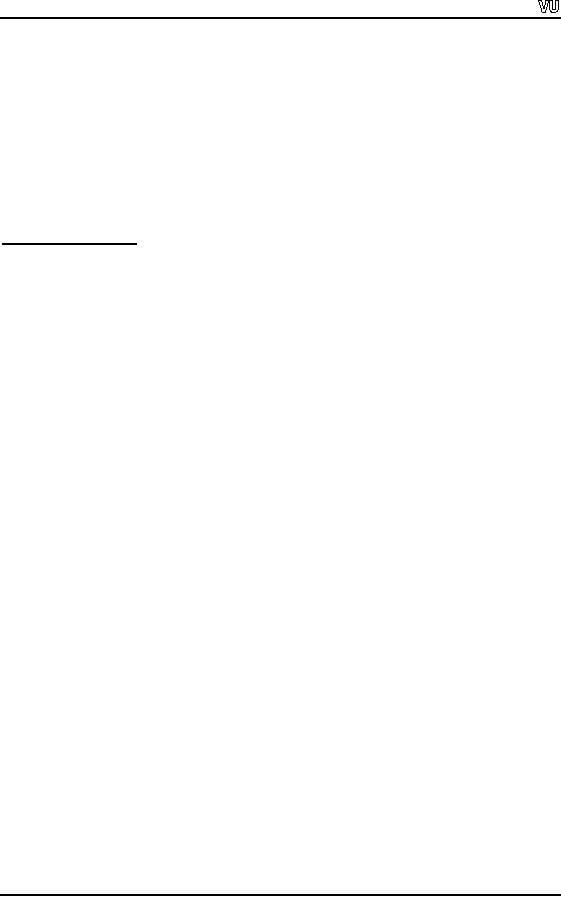
CS201
Introduction to Programming
Lecture
Handout
Introduction
to Programming
Lecture
No. 22
Reading
Material
Deitel
& Deitel - C++ How to
Program
Review
previous lectures
Summary
·
Bitwise
Manipulation and Assignment
Operator
·
Design
Recipes
·
Variables
·
Data
Types
·
Operators
- Arithmetic
operators
- Logical
operators
- Bitwise
operators
·
Programming
Constructs
·
Decisions
- if
statement
- Nested if
statement
·
Loops
- while
loop
- do-while
loop
- for
loop
·
switch,
break and continue
Statements
·
Functions
- Function
Calling
- Top-Down
Methodology
·
Arrays
·
Pointers
·
File
I/O
Page
269
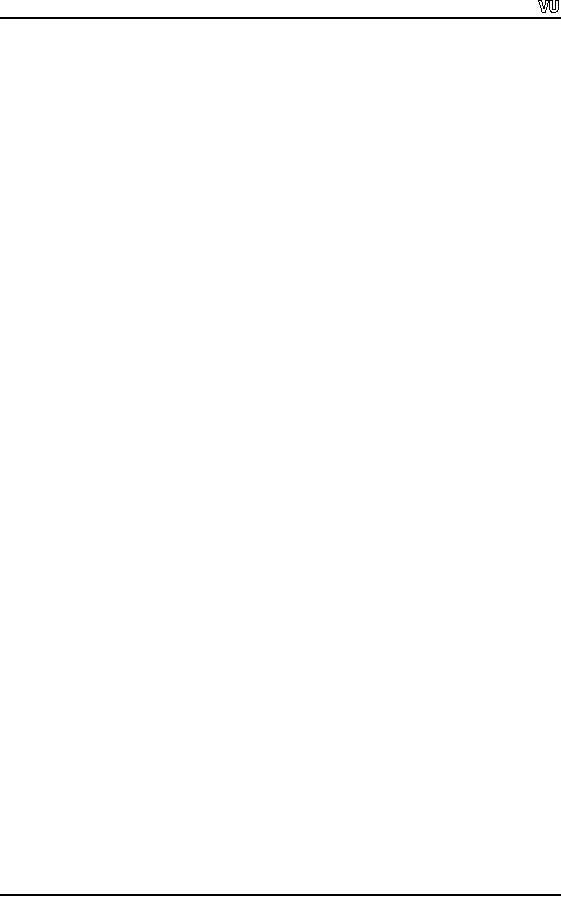
CS201
Introduction to Programming
Bitwise
Manipulation and Assignment
Operator
Last
time we discussed bitwise
operators, we will continue with
the elaboration of
bitwise
manipulation
and assignment
operator.
C/C++
are well constructed
languages, at start we used to
write:
a = a +
1;
This is
used to increment the variable. Then we
came to know of doing it in a
different
manner:
a +=
1;
This is
addition and assignment operation
using single operator +=.
The
same thing applies to
bitwise operators; we have compound
assignment operators
for
&
(bitwise
AND), |
(bitwise
OR) and ^
(bitwise
exclusive OR). It is written in
the same
way as
for the above mentioned
arithmetic operators . Suppose we
want to write:
a = a &
b;
It can be
written as:
a &=
b;
Similarly
for |
and
^
operations
we can write the statement
in the following fashion.
a |=
b;
and
a ^=
b;
Remember,
the ~
(NOT)
operator is unary as it requires
only one operand. Not of
a
variable
a
is
written as: ~a. There
is no compound assignment operator available
for it.
Now we
will recap topics covered in
the previous lectures one by
one.
Design
Recipe
Our problems,
typically, are of real world
nature, e.g., Payroll of a company.
These
problems
are expressed in words. As a programmer
we use those words to
understand the
problem
and to come up with its
possible solution.
To begin
with the comprehension and
resolution process, we analyze the
problem and
express
the problem in words in reduced
and brief manner. Once we
have reduced it into
its
essence, we put some
examples to formulate it.
For example, if the problem is to
Page
270
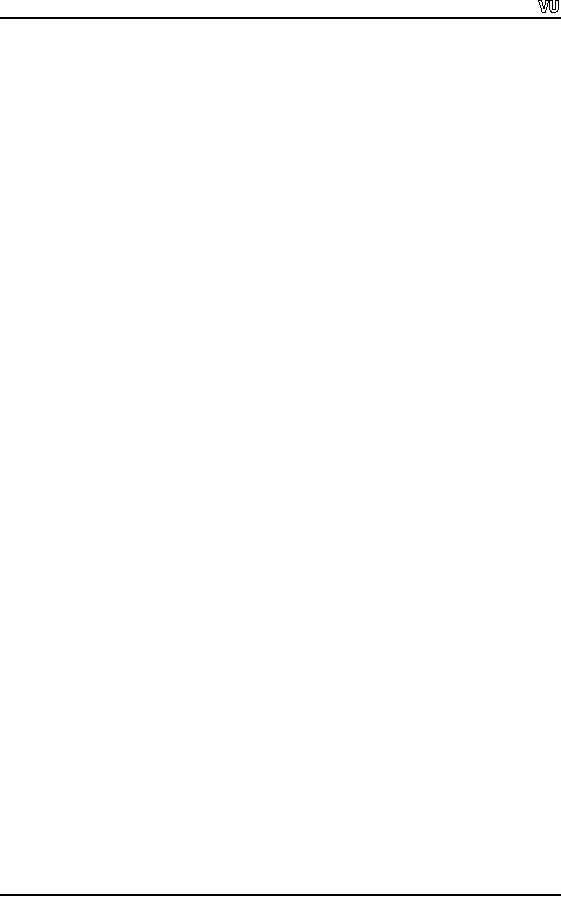
CS201
Introduction to Programming
calculate
the annual net salary of
employees, we can take an example
for a particular
employee
X. Later we will refine the problem,
write program and test it.
Finally we
review it
if it has met objectives. We have
discussed all these steps in
Design Recipe.
There was
a main heading in the topic,
"Pay attention to the
detail". Never forget this
as
our
computers are very dump
machines. They perform exactly whatever
we tell them.
It is
important to keep in mind
that we are using C/C++ as a
vehicle to understand
programming
concepts.
Variables
The
computer memory can be thought of as
pigeon holes each with an
address. To store
numbers
or characters in computer memory, we
need a mechanism to manipulate it
and
data
types are required for
different types of data.
Instead of using hard coded
memory
addresses
with data types, symbolic
names are used. These
symbolic names are
called
variables
because they can contain
different values at different times.
For example,
int
i;
double
interest;
i
and
interest
are
symbolic names or variables
with types of int
and
double
respectively.
Data
Types
int
type is
used to store whole numbers.
There are some varieties of
data types to store
whole
numbers e.g., short
and
long. unsigned
qualifier
is used for
non-negative
numbers.
To represent real numbers we
use float
data
type. For bigger-sized
real
numbers
double
data
type is used. char
data type
is used to store one
character.
Generally,
the size of the int
type
on our machines is 4 bytes
and char
is 1
byte. chars
are
enclosed in single quotation mark. ASCII
table contains the numeric
values for chars.
We further
discussed a bit later stage
about the aggregations or collections of
basic data
types
(int, float
and
char
etc)
called arrays.
Arrays
are used to aggregate
variables of
same
data type.
Operators
We
discussed three types of
operators:
- Arithmetic
Operators
- Logical
Operators
- Bitwise
Operators
Page
271
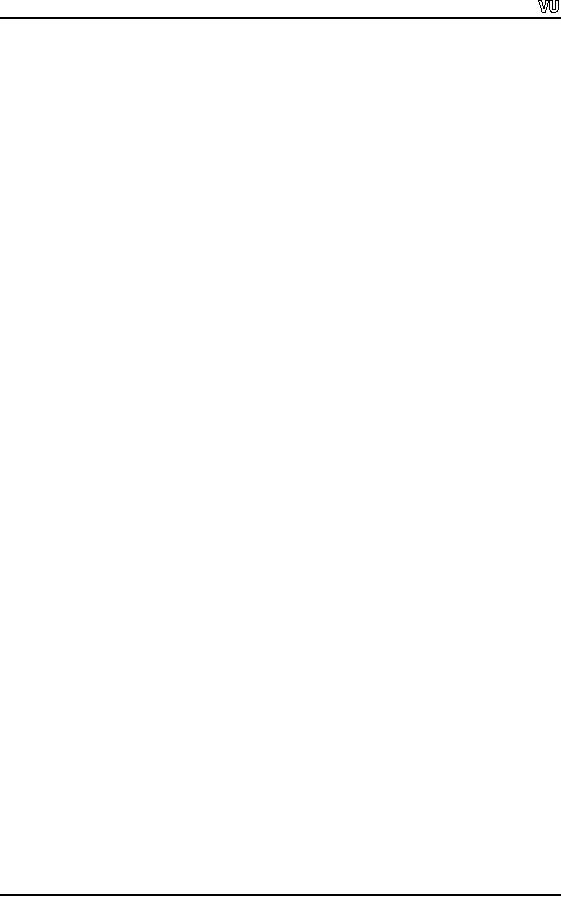
CS201
Introduction to Programming
Arithmetic
Operators
+
operator
is used to add two numbers,
-
is
used to subtract one number
from the other, *
is used
to multiply two numbers, /
is
used to divide numbers. We
also have a modulus
operator
%
,
used to get the remainder.
For example, in the following
statement:
c = 7 %
2;
7 will be
divided by 2 and the
remainder 1
will be
the stored in the variable
c. We
also
used
this operator in our
programs where we wanted to determine
evenness or oddness of
a number.
There are also compound
arithmetic operators +=, -=, *=, /=
and
also %=
for
our
short hand. It is pertinent to
note that there is no space
between these compound
operators.
Logical
Operators
The
result for logical operators
is always true or false. &&
(AND
operator) and ||
(OR
operator).
Logical Comparison operators are
used to compare two numbers.
These
operators
are: <, <=, ==, >, >=. Don't
confuse the ==
operator
of equality with =
operator
of
assignment.
It is
important for us to remember
the difference between these
two operators of
equality
(==)
and assignment (=) .
However, C/C++ creates a
little problem for us here. When
we
write a
statement as:
a =
b;
The
assignment statement itself
has a value, which is the
same as that of the
expression
on the
right hand side of the
assignment operator. We can recall
from our last lecture
that
we only
wrote a number inside the if
statement. We also know that
if the resultant inside
the if
statement is non-zero then
its code block is executed.
In case, the result is zero,
the
control
is transferred to the else
part.
If we
want to compare two
variables a
and
b
inside if
statement but wrongly write
as:
if ( a = b
)
{
// if
code block
// do
something
}
else
{
// do something
else
}
Page
272
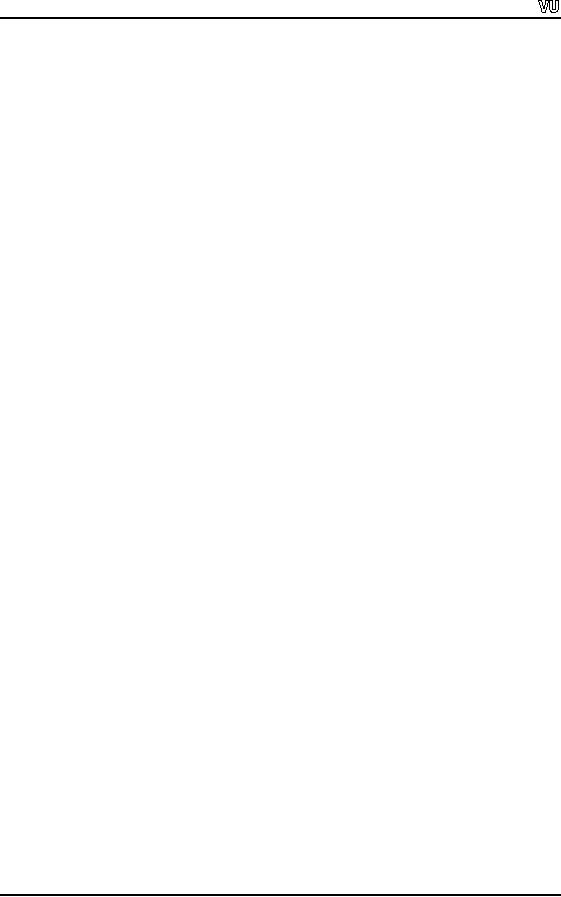
CS201
Introduction to Programming
In this
case, if the value of the
variable b
is
non-zero (and hence value of
the statement a
= b
is
non-zero) then if code block
will be executed. But this
was not required, it is a
logical
fault and compiler was
unable to detect it. Our objective was to
compare two
variables.
For that purpose, we should
have used assignment
operator ==
for
that as:
if ( a == b
)
One
should be very careful while
using comparison operators.
You should not miss
any
case of
it and be sure about what
you want to do and what
will be the output of a
comparison
statement.
You
should keep in mind straight
line of Calculus for the
sake of completeness,
you
should
always divide your domain
into two regions. If we take
>= as one region then
the
other
region is <.
Similarly if we say <
as a
region,
the
other region is >=.
Depending on
the
problem requirements, these regions
should be very clear.
Bitwise
Operators
&
is
bitwise AND operator, |
is
bitwise OR operator, ^
is
bitwise Exclusive OR
operator
and
~
is
bitwise inversion or NOT operator.
~
(NOT
operator) is unary operator as
it
requires
one operator and the
remaining operators &, | and ^ are
binary operators
because
they
require two operands.
Programming
Constructs
For
us, it is not necessary to
know who is the one to
devise or decide about
these
constructs
to be part of the program logic.
The important thing is the
concept of
programming
constructs, required to write a
program. We have earlier discussed
three
constructs.
1. The
sequential
execution of
statements of a program. Execution of
statements begins
from
very first statement and
goes on to the last
statement.
2. Secondly we
need decisions
that if
something is true then we need to do
something
otherwise we
will do something else. We use if
statement for this.
3. The
third construct is loops. Loops
are employed for repetitive
structures.
Decisions
Normally,
if statement is used where decisions
are required.
Page
273
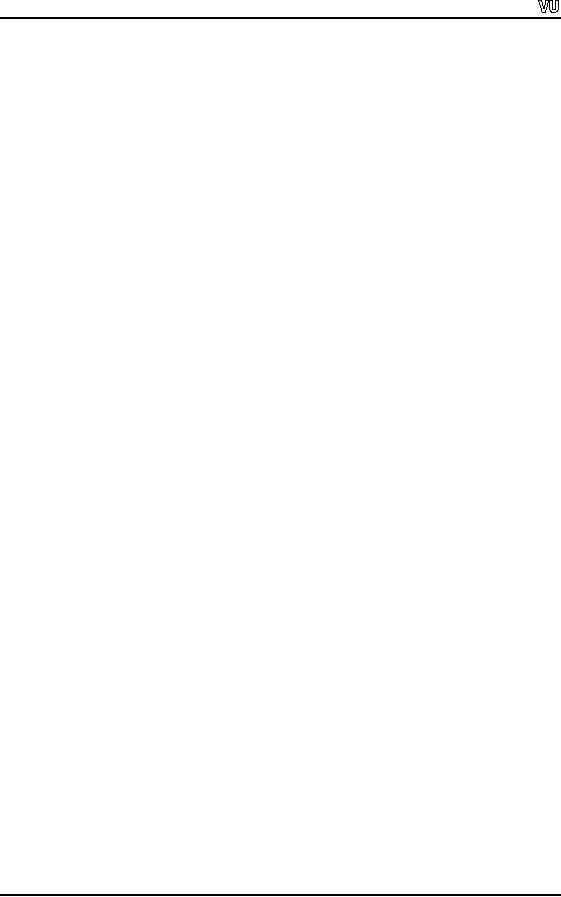
CS201
Introduction to Programming
If
statement
The
syntax of if statement is fairly
simple i.e.
if
(condition)
{
// if
code block
}
else
{
// else
code block
}
The
result of the condition
can be
either true or false. If the
condition is true, if
code
block
is
executed. Braces of the if
code block are mandatory
but if there is only
one
statement
in the if code block then
the braces can be omitted or
are optional. Now if
the
condition
is
false, the if code block is
skipped and the control is
transferred to the
else
part
and else code block is
executed.
Else part is optional to
associate with the if
part.
So
without else the statement
looks like the
following:
if
(condition)
{
// if
code block
// Do something
here
}
Use of
braces is again mandatory. Again,
however, if there is only statement
inside the
else
part then brace is
optional.
As a
programming practice, use of
braces all the time is
recommended. It makes
your
program
more readable and logically
sound.
What
happens when the condition
is complex?
Nested if
statement
For
complex conditions, we use logical
connectives like &&, ||. For
example:
if ( a > b
&& a < c)
If there
are nested
decisions structure
that we want to do something based on
some
condition
and further we want to do something more
based on an additional condition.
Then we
use nested if-statements as
under:
if ( a > b
&& a < c )
{
// Do
something
if ( a ==
100 )
Page
274
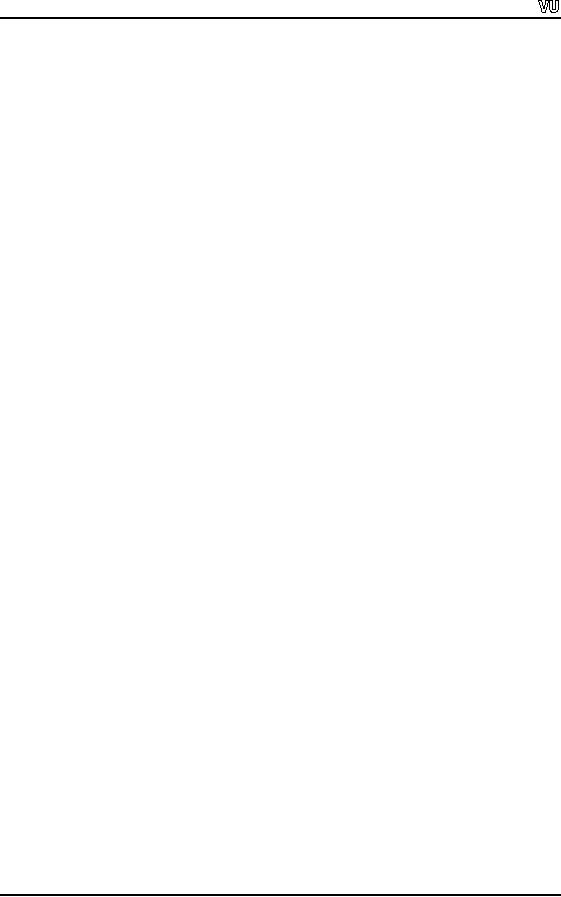
CS201
Introduction to Programming
{
// Do something
more
}
else
{
// Do something
else more
}
}
else
{
// Do something
else
}
From
stylistic and readability
perspective, we properly indent the
statements inside if-
statements
as shown above.
We
discussed pictorial representation of
if-statement. By using flowchart of if
statement
that was
a bit different than
normally we see inside books, we
introduced structured
flowcharting.
In structured
flowcharting, we
never go to the left of the
straight line that joins Start
and
Stop
buttons.
There is a logical reason
for it as while writing
code, we can't move
to
the
left outside the left
margin. Left margin is the
boundary of the screen and
indentation
is made
towards the right side. So we
follow the construct that is
equivalent to the
program
being written. The major
advantage of this approach is
achieved when we draw
a
flowchart of solution of a complex
problem. The flowchart is the
logical depiction of
the
solution to the problem. One
can write code easily with
the help of the
flowchart.
There
will be one to one
correspondence between the
segments of the flowcharts
and the
code.
Loops
Going on
from the decision structures we
discussed about loops. In
our program if we
have to
do something repeatedly then we can
think of applying loop
structure there.
There
are few variants of loops in
C language. However, other
languages might have
lesser
number of loop variants but
a programming language always
has loops constructs.
While
Loop
The
syntax of the while loop is
as follows:
while (
condition )
{
// while
code block
// Do
something
}
Page
275
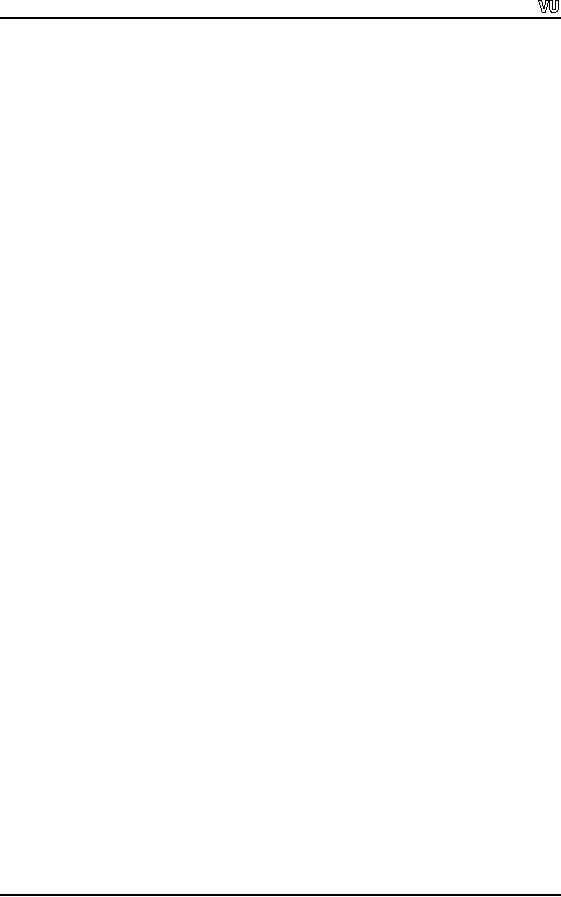
CS201
Introduction to Programming
The
condition is a logical expression
like a == b that returns
true or false. Braces
are
mandatory
to for while loop when
there are multiple lines of
code inside the while
code
block. If
there is only single line inside
the while code block,
the braces become
optional.
It is
good practice to use braces.
The statements inside the
while code block are
never
executed,
if the while condition
results in false for very
first time it is entered. In
other
words,
statements inside the while
code block executes 0 to n
times.
Page
276
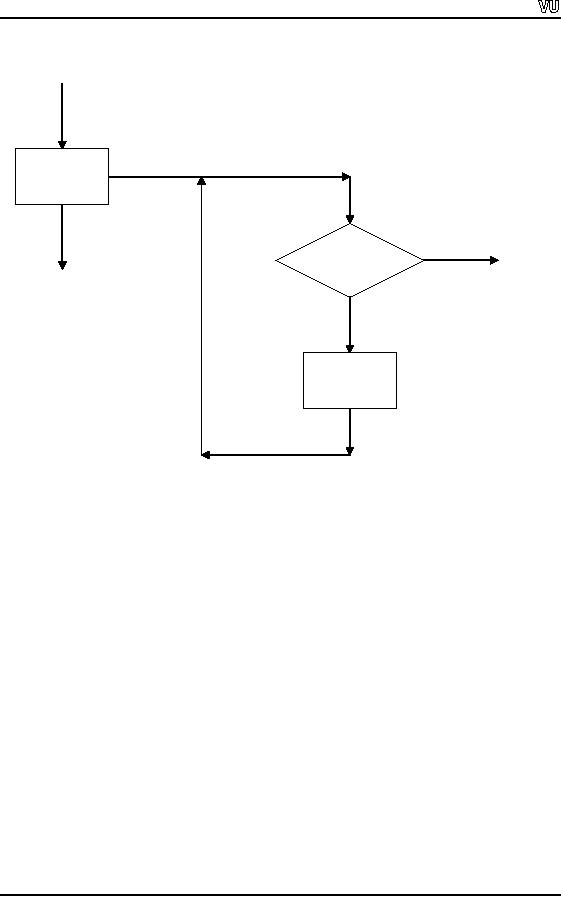
CS201
Introduction to Programming
The
flowchart for the while
loop is as follows:
while
False
condition
Exit
True
Process
Do-While
Loop
Next
loop variant is Do-while. It syntax is as
under
do
{
//
do-while code block
// Do
something
}
while (
condition )
The
important difference of this loop
from the rest ones is
that it is executed once
before
the
condition is evaluated. That
means the statements of
do-while code block execute
at
least
once.
Page
277
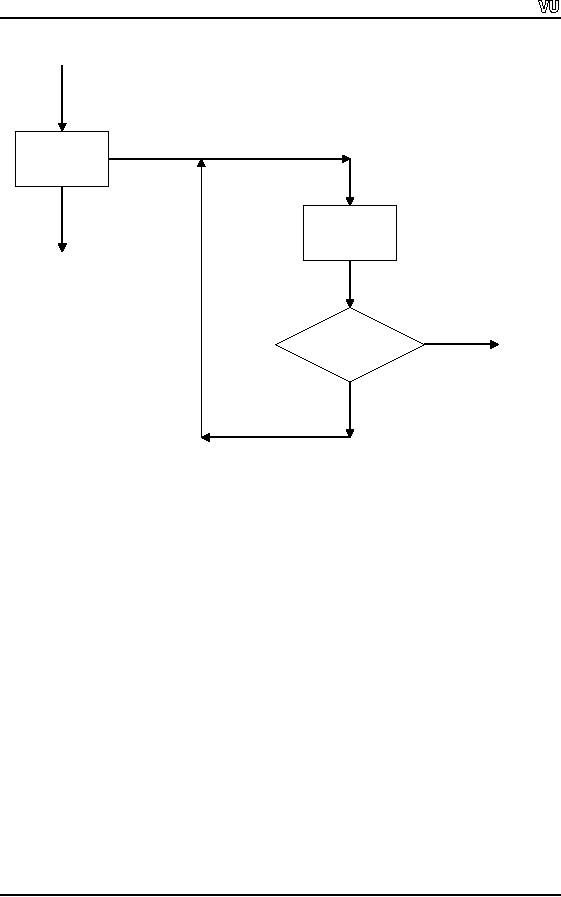
CS201
Introduction to Programming
The
flowchart for do-while loop
is given below:
do
while
Process
False
condition
Exit
True
For
Loop
The
for
loop becomes
bread and butter for us as
it gathers three things together.
The
syntax
for the for loop is as
follows:
for (
initialization statements; condition;
incremental statements)
{
//for
code block
// Do
something
}
E.g.,
for (
int i = 0; i < 10; i
++)
{
}
The
for
loop is
executed until the condition
returns true otherwise it is
terminated.
Page
278
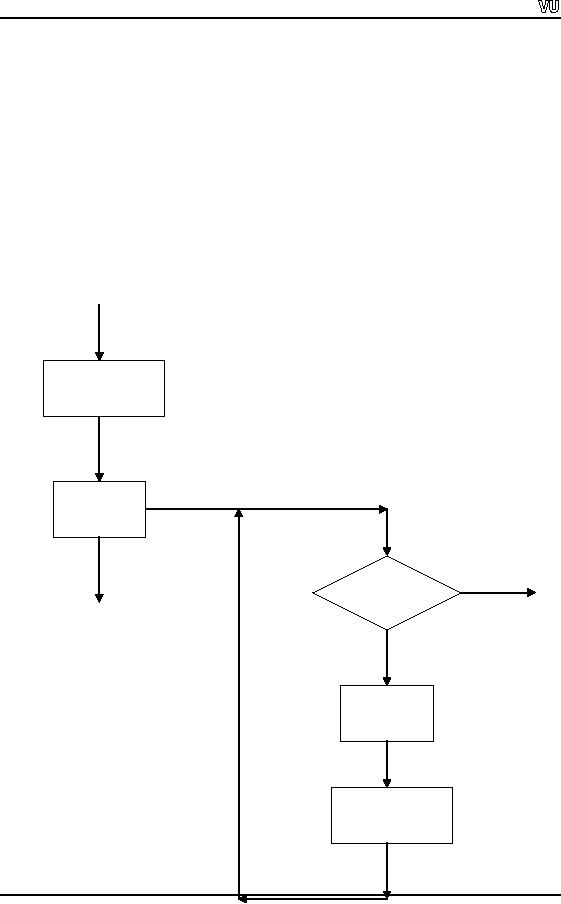
CS201
Introduction to Programming
The
braces are not mandatory if
there is single statement in the
for code block. But
for
sake of
good programming practice,
the single statement is also
enclosed in braces.
Some
people
write the for loop in
the following manner:
for (
initialization statements; condition;
incremental statements){
//for
code block
// Do
something
}
Both
the methods for writing of
for loop are perfectly
correct. You can use
anyone of
these. If
you indent your code properly,
the process will become
easier.
The
flowchart for for
loop is as
under:
for
Initialization
Statements
for
False
condition
True
Process
for
Incre/Decre
Statements
Page
279
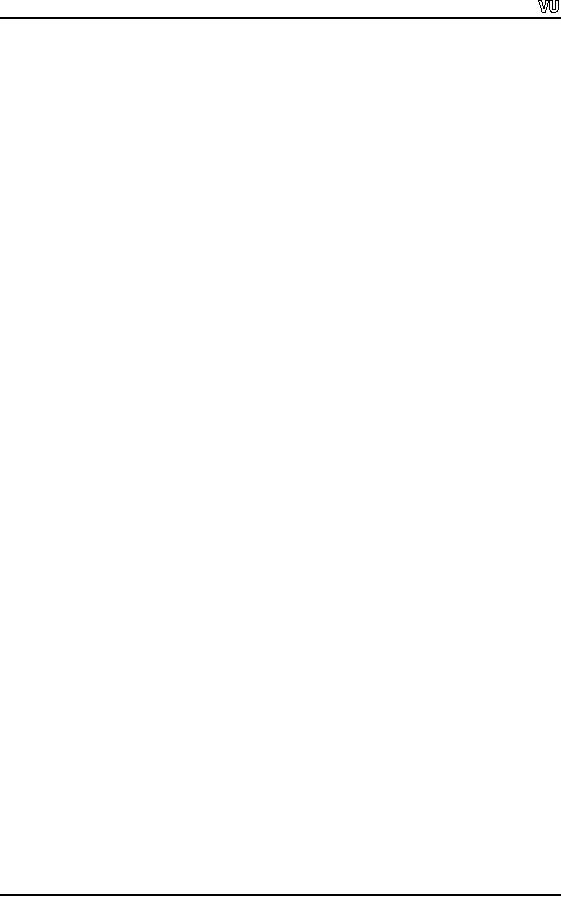
CS201
Introduction to Programming
switch,
break and continue
Statements
For
multi-way
decisions, we can
use nested if-statements or separate
if-statements or
switch
statement.
There are few limitations of
switch statement but it is
necessary to use
break
statements
in every case
inside
the switch statement. If a
case
results
in true when
there is
no break
statement
inside it, all the
statements below this case
statement
are
executed.
break
statement
causes to jump out of the
switch statement. We use break
at
the
end of every case
statement.
By using break, the
jumping out from switch
statement
is in a
way bit different from
the rules of structured programming.
But break
statement
is
so
elegant and useful that you
can use it inside switch
statement
and inside loops. If we
use
break inside a loop, it causes that
loop to terminate. Similarly continue
statement
is
very
useful inside loops. continue
statement
is used, when at a certain
stage, you don't
want to
execute the remaining statements inside
your loop and want to go to
the start of
the
loop.
Functions
In C/C++,
functions are a way of modularizing
the code. A bigger problem is
broken
down
into smaller and more manageable
parts. There is no rule of thumb
for the length of
each
part but normally one
function's length is not more than
one screen.
Page
280
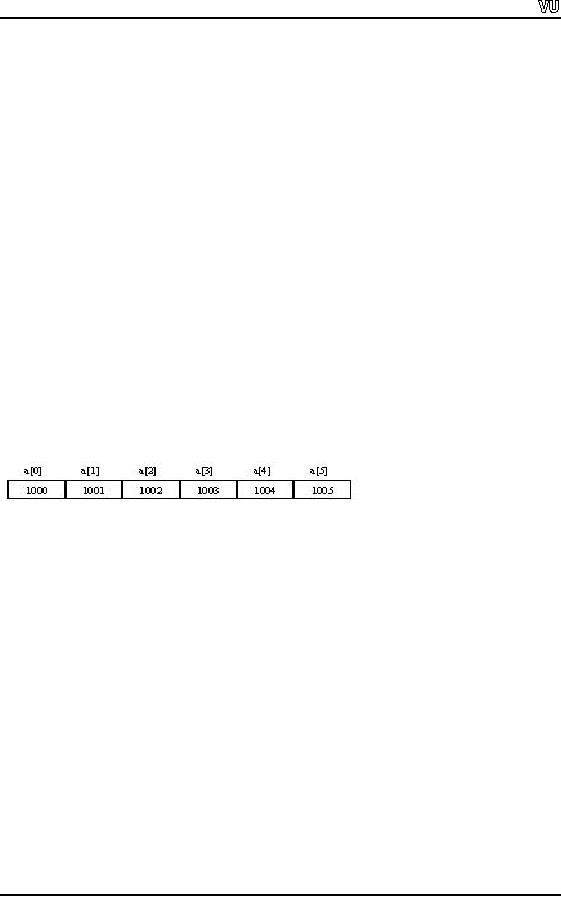
CS201
Introduction to Programming
Function
Calling
We
covered Functions Calling by
value and by reference. The
default of C language is
call by
value. Call by value means
that when we call a function
and pass some
parameter
to it,
the calling function gets
the copy of the value and
the original value
remains
unchanged.
On the other hand, sometimes, we
want to call a function and
want to see the
changed
value after the function
call then call by reference
mechanism is employed. We
achieved
call by reference by using
Pointers. Remember while
calling functions, call by
value
and call by reference are
different techniques and default
for ordinary variables is
call by
value.
Top-Down
Methodology
We
discussed top-down design methodology.
How do we see a problem at a high
level
and
identify major portions of it.
Then by looking at each
portion we identify
smaller
parts
inside it to write them as functions.
Arrays
After
discussing functions and playing
little bit with function
calling, we had
elaborated
the
concept of Arrays. As discussed
previously in this lecture,
arrays are used to
aggregate
variables of same data type.
We wrote little functions about it
and did some
exercises
e.g., when we wanted to store
age of students of our
class. Then instead
of
using a
separate variable for each
student, an array was employed to store
the ages of the
students.
Then to manipulate or to access
individual array elements, a
technique array
indexing
was
used. One important point to
remember is that array
indexes start from 0.
Let's
say our array name is
a
of 10
ints, its
first element will be a[0]
while the last
one
will be
a[9]. Other languages like
Fortran carry out 1-based
indexing. Due to this 0
based
indexing
for arrays in C language,
programmers prefer to start
loops from 0.
Arrays
can also be multi-dimensional. In C
language, arrays are stored
in row major order
that a
row is stored at the end of
the previous row. Because of
this storage methodology,
if we
want to access the first
element of the second row
then we have to jump as
many
numbers
as the number of columns in the
first row. This fact becomes
important when we
are
passing arrays to functions. In the
receiving function parameters, we have to
write all
the
dimensions of the array except
the extreme-left one. When
passing arrays to
functions, it is
always call by reference by default, it
is not call by value as in
the default
behavior
of ordinary variables. Therefore, if the
called function changes something in
the
array,
that change is actually made
in the original array of the
calling function. When we
pass
ordinary variables to functions, they are
passed by value because of
the default
behavior.
But when an array is passed
to a function, the default behavior
changes and
Page
281
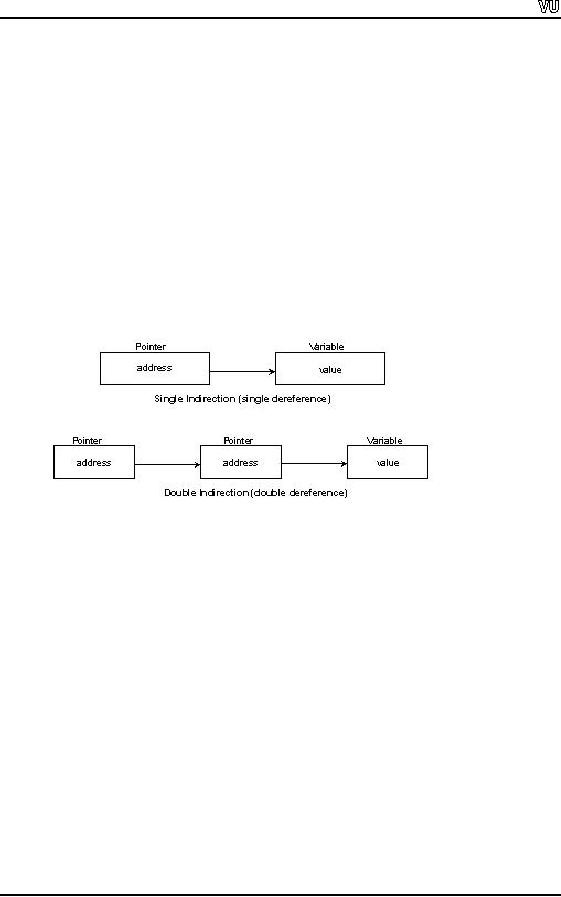
CS201
Introduction to Programming
array is
passed by reference. We also
did some examples of arrays by
using Matrices and
did
some exercises by transposing
and reversing a squared
matrix. Arrays are not
just
used in
Mathematics or Linear Algebra but are
employed in a number of other
problems
like
when we store ages, names,
and grades or want to
calculate grade point of
average.
This is
very useful construct especially when
used with loops. Normally it
is very rare
that
you see an array in a program
and loop is not being
used to manipulate it.
Like
nested if-statements, we have nested
loops, used with
multi-dimensional arrays. A
while
loop can have an inner while
loop. Similarly a for loop
can have a for loop
inside.
It is
also not necessary that a
while
loop should
have only a while
loop but it
can be a for
loop
also or
any other construct like
if-statement.
Pointers
It is
very important topic of
C/C++ . Pointers are
different types of variables
that contain
memory
address of a variable instead of a
value.
The
very first example we discussed
for pointers was for
implementing function
calling
by
reference. Suppose we want to
interchange (swap) two numbers by
making a function
call. If
we pass two variables to the
function, these will be
passed as ordinary variables by
value.
Therefore, it will be ineffective as
swapping of variables inside the function
will
only be
on the copies and not on
the original variables. So
instead of passing variables
we
pass
their addresses. In the called function,
these addresses are taken
into pointer
variables
and pointers start pointing
the original variables.
Therefore, the swapping
operation
done inside the function is
actually carried out on the
original variables.
We also
saw that Pointers and Arrays
are inter-linked. The array
name itself is a pointer
to the
first element. It is a constant pointer
that cannot be incremented
like normal pointer
variables.
In case of two-dimensional arrays, it
points to the first row and
first column. In
three-dimensional
array, you can imagine it
pointing to the front corner
of the cube.
File
I/O
We
discussed about Files and
File I/O for sequential
and random files. We used a
mixture
of C/C++
for file handling and how
the sequential and random
files are accessed. We
saw
Page
282
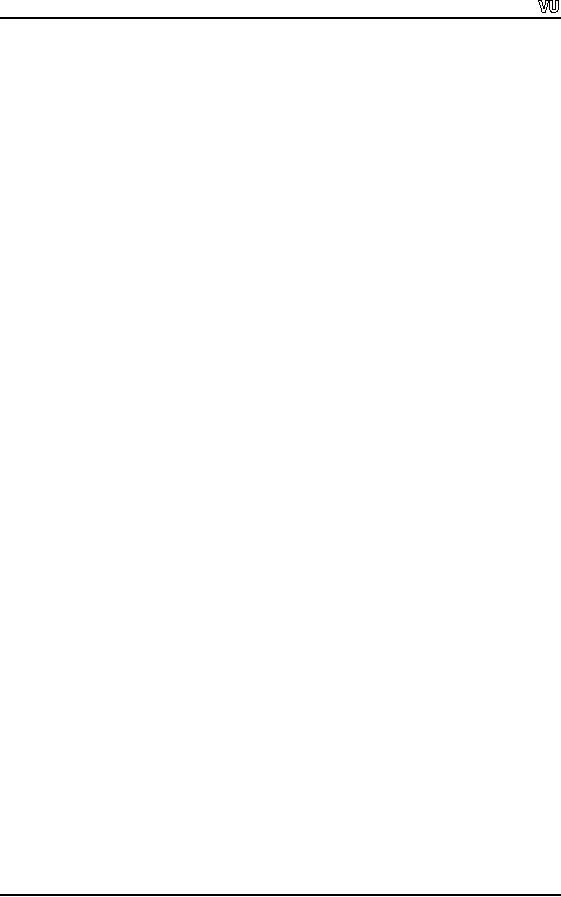
CS201
Introduction to Programming
several
modes of opening files. The
important functions were seek
and
tell
functions.
Seek
functions (seekg and seekp )
used to move into the
file and tell functions
(tellg and
tellp)
provided us the location inside the
file.
You
are required to go with very
clear head, try to
understand concepts and
assess how
much you
have learned so far to prepare
for the mid-term
examination.
Page
283
Table of Contents:
- What is programming
- System Software, Application Software, C language
- C language: Variables, Data Types, Arithmetic Operators, Precedence of Operators
- C++: Examples of Expressions, Use of Operators
- Flow Charting, if/else structure, Logical Operators
- Repetition Structure (Loop), Overflow Condition, Infinite Loop, Properties of While loop, Flow Chart
- Do-While Statement, for Statement, Increment/decrement Operators
- Switch Statement, Break Statement, Continue Statement, Rules for structured Programming/Flow Charting
- Functions in C: Structure of a Function, Declaration and Definition of a Function
- Header Files, Scope of Identifiers, Functions, Call by Value, Call by Reference
- Arrays: Initialization of Arrays, Copying Arrays, Linear Search
- Character Arrays: Arrays Comparisonm, Sorting Arrays Searching arrays, Functions arrays, Multidimensional Arrays
- Array Manipulation, Real World Problem and Design Recipe
- Pointers: Declaration of Pointers, Bubble Sort Example, Pointers and Call By Reference
- Introduction, Relationship between Pointers and Arrays, Pointer Expressions and Arithmetic, Pointers Comparison, Pointer, String and Arrays
- Multi-dimensional Arrays, Pointers to Pointers, Command-line Arguments
- String Handling, String Manipulation Functions, Character Handling Functions, String Conversion Functions
- Files: Text File Handling, Output File Handling
- Sequential Access Files, Random Access Files, Setting the Position in a File, seekg() and tellg() Functions
- Structures, Declaration of a Structure, Initializing Structures, Functions and structures, Arrays of structures, sizeof operator
- Bit Manipulation Operators, AND Operator, OR Operator, Exclusive OR Operator, NOT Operator Bit Flags Masking Unsigned Integers
- Bitwise Manipulation and Assignment Operator, Programming Constructs
- Pre-processor, include directive, define directive, Other Preprocessor Directives, Macros
- Dynamic Memory Allocation, calloc, malloc, realloc Function, Dangling Pointers
- History of C/C++, Structured Programming, Default Function Arguments
- Classes and Objects, Structure of a class, Constructor
- Classes And Objects, Types of Constructors, Utility Functions, Destructors
- Memory Allocation in C++, Operator and Classes, Structures, Function in C++,
- Declaration of Friend Functions, Friend Classes
- Difference Between References and Pointers, Dangling References
- Operator Overloading, Non-member Operator Functions
- Overloading Minus Operator, Operators with Date Class, Unary Operators
- Assignment Operator, Self Assignmentm, Pointer, Conversions
- Dynamic Arrays of Objects, Overloading new and delete Operators
- Source and Destination of streams, Formatted Input and Output, Buffered Input/Output
- Stream Manipulations, Manipulators, Non Parameterized Manipulators, Formatting Manipulation
- Overloading Insertion and Extraction Operators
- User Defined Manipulator, Static keyword, Static Objects
- Pointers, References, Call by Value, Call by Reference, Dynamic Memory Allocation
- Advantages of Objects as Class Members, Structures as Class Members
- Overloading Template Functions, Template Functions and Objects
- Class Templates and Nontype Parameters, Templates and Static Members
- Matrices, Design Recipe, Problem Analysis, Design Issues and Class Interface
- Matrix Constructor, Matrix Class, Utility Functions of Matrix, Input, Transpose Function
- Operator Functions: Assignment, Addition, Plus-equal, Overloaded Plus, Minus, Multiplication, Insertion and Extraction